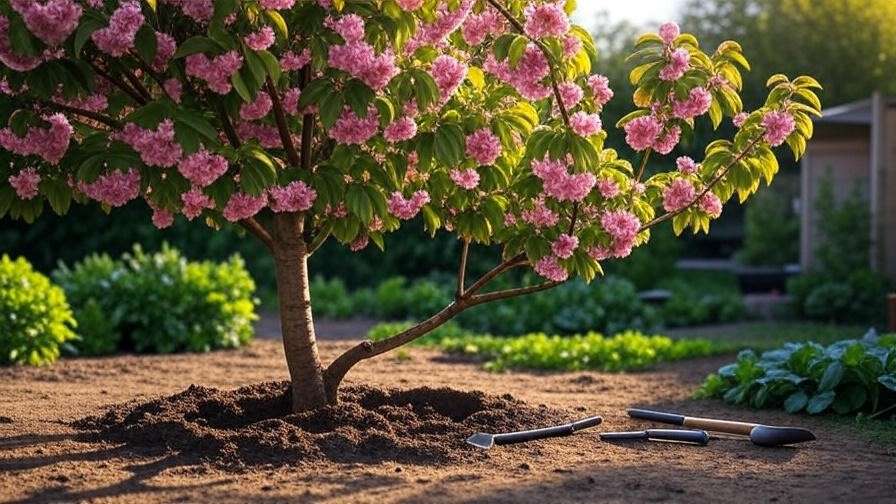Imagine stepping into your garden, expecting a burst of vibrant cherry blossoms or a bountiful harvest, only to find your cherry tree struggling—yellowing leaves, sparse fruit, or stunted growth. The culprit might be hiding beneath the surface: soil compaction. Learning how to identify cherry tree soil compaction issues and fix them is crucial for restoring your tree’s health and ensuring years of lush blooms and juicy cherries. As a horticulturist with over 20 years of experience and insights drawn from leading agricultural research, I’ll guide you through expert-backed, practical steps to diagnose and resolve soil compaction. By the end, you’ll have the tools and confidence to save your cherry tree and prevent future issues. Let’s dig in! 🌿
What Is Soil Compaction and Why Does It Harm Cherry Trees? 🌳
Understanding Soil Compaction
Soil compaction occurs when soil particles are pressed together, reducing the pore spaces that allow air, water, and nutrients to reach tree roots. This dense, hard soil can form due to heavy foot traffic, construction equipment, poor drainage, or naturally heavy clay soils. For cherry trees, which thrive in loose, well-aerated soil, compaction is a silent threat that can choke their growth.
According to research from the USDA, compacted soil can reduce root penetration by up to 50%, starving trees of essential resources. Cherry trees, with their shallow root systems, are especially vulnerable, making early detection critical.
How Compaction Affects Cherry Trees
Compacted soil creates a cascade of problems for cherry trees:
- Reduced Water and Nutrient Uptake: Dense soil restricts water infiltration, leaving roots thirsty and malnourished.
- Stunted Growth: Limited root expansion weakens the tree, leading to smaller canopies and fewer branches.
- Poor Fruit Production: Compaction often results in smaller, less flavorful cherries or reduced yields.
- Increased Disease Risk: Poor drainage in compacted soil can lead to waterlogging, fostering root rot or fungal infections.
A study from Cornell University’s Horticulture Department found that compacted soils can decrease fruit tree yields by 20–30%. For cherry growers, this translates to fewer harvests and weaker trees over time.
Signs of Soil Compaction in Cherry Trees 🍒
Visual Symptoms on the Tree
Spotting soil compaction starts with observing your cherry tree. Look for these telltale signs:
- Yellowing or Wilting Leaves: Even with regular watering, leaves may turn yellow or droop due to poor water uptake.
- Small or Sparse Fruit: Compaction limits nutrient delivery, resulting in fewer or undersized cherries.
- Stunted Growth: If your tree hasn’t grown noticeably in years or has a thin canopy, compaction may be to blame.

Checklist for Gardeners:
- Are leaves yellowing despite consistent care?
- Is fruit production declining year after year?
- Does the tree look smaller or weaker than expected?
Soil and Root Indicators
Examine the soil and roots around your cherry tree:
- Hard, Cracked Soil: If the ground feels rock-hard or shows surface cracks, compaction is likely.
- Water Pooling: Slow drainage or puddles after rain indicate poor soil porosity.
- Shallow Roots: Exposed or struggling roots suggest the tree can’t penetrate compacted soil.
Case Study: In a Michigan cherry orchard, growers noticed declining yields despite healthy irrigation. Soil tests revealed compaction from heavy machinery, which was resolved through aeration and organic amendments, boosting yields by 25% within two seasons.
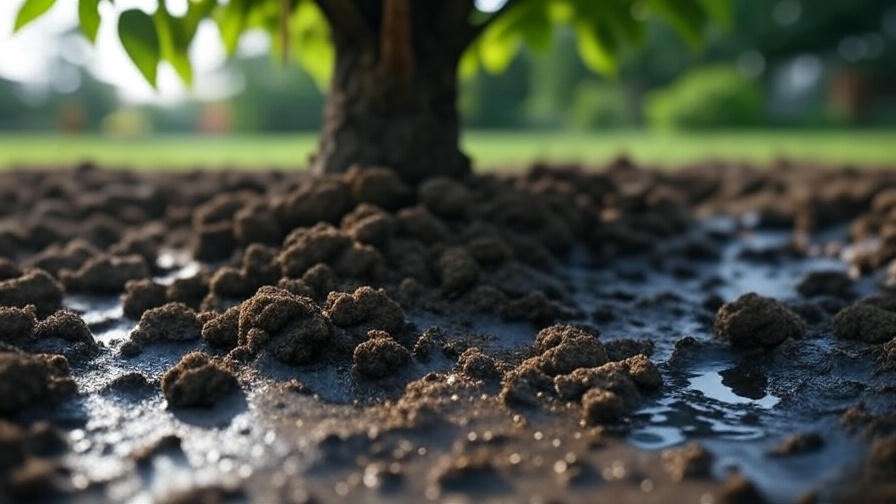
Tools to Confirm Compaction
To confirm compaction, use these tools:
- Soil Probe or Penetrometer: Measures soil resistance; readings above 300 psi indicate severe compaction.
- Shovel Test: Dig a small hole near the tree’s drip line. If the soil is hard to penetrate or clumpy, compaction is present.
- Affordable Option: A basic soil probe (available for $20–$50 at garden centers) is a gardener’s best friend for diagnosing compaction.
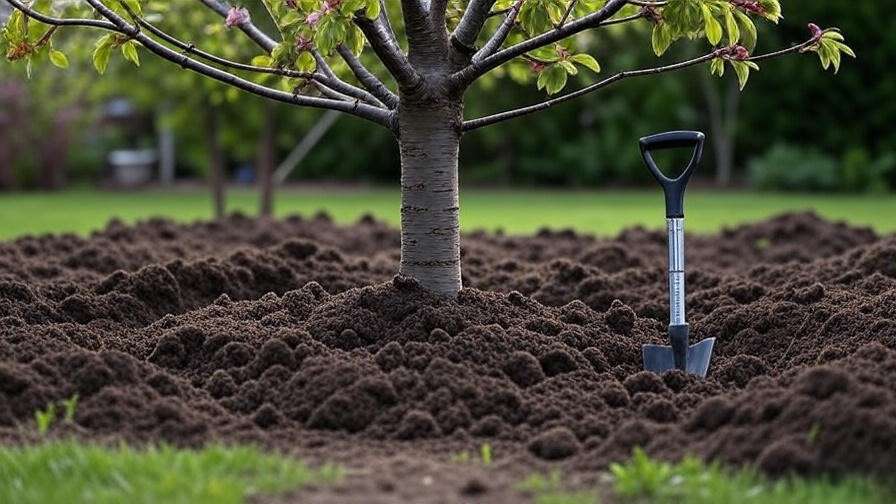
Causes of Soil Compaction Around Cherry Trees 🌍
Common Culprits in Home Gardens
Compaction often stems from everyday activities:
- Foot Traffic: Walking repeatedly near the tree’s root zone compacts soil over time.
- Improper Planting: Overpacking soil during planting can create a dense barrier around roots.
- Landscaping Activities: Lawn mowers, vehicles, or construction near trees can compress soil.
Environmental and Soil Factors
Natural conditions also contribute:
- Clay-Heavy Soils: Soils high in clay compact easily, especially after rain.
- Poor Drainage: Excess water saturates soil, reducing air pockets and increasing density.
- Low Organic Matter: Soils lacking compost or organic material are prone to compaction.
Expert Insight: Dr. Linda Chalker-Scott, a soil scientist at Washington State University, notes that soils with less than 5% organic matter are significantly more prone to compaction, directly impacting tree health.
How to Fix Soil Compaction for Cherry Trees 🛠️
Step 1: Assess the Extent of Compaction
Start by evaluating the soil:
- Soil Test: Use a soil testing kit (e.g., from MySoil or local extension services) to check compaction, pH, and nutrient levels.
- Map the Root Zone: Focus on the drip line (the area under the outermost branches), where most cherry tree roots lie.
- Tool Recommendation: The Luster Leaf Rapitest Soil Test Kit ($15–$30) is reliable for home gardeners.
Step 2: Aerate the Soil
Aeration loosens compacted soil, restoring air and water flow:
- Manual Aeration: For small areas, use a garden fork to poke holes 6–8 inches deep, spaced 6 inches apart.
- Core Aeration: For larger areas, rent a core aerator ($50–$100/day) to remove soil plugs.
- Timing: Aerate in spring or fall when soil is moist but not soggy to avoid further compaction.
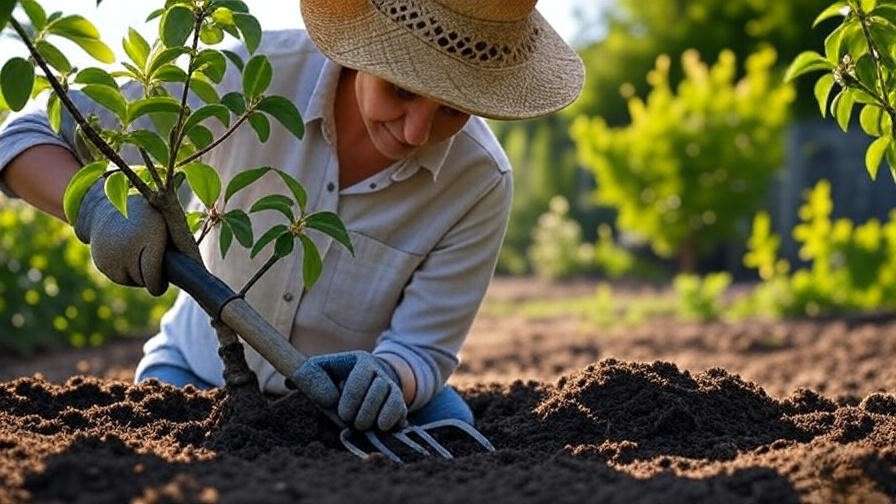
Safety Note: Avoid damaging shallow roots. Work gently and stay outside the tree’s trunk base.
Step 3: Amend the Soil
Adding organic matter improves soil structure:
- Compost or Aged Manure: Mix 2–3 inches of compost into the top 6 inches of soil.
- Cover Crops: Plant clover or alfalfa to naturally aerate soil and add organic matter.
- Table: Soil Amendments for Cherry Trees
Recommended Avoid Compost, leaf mold Sand (can worsen clay soils) Aged manure Fresh manure (burns roots) Wood chips Synthetic fillers
Step 4: Mulch Properly
Mulching protects soil and prevents future compaction:
- Apply 2–4 inches of organic mulch (e.g., wood chips, bark, or straw) around the drip line.
- Keep mulch 3–6 inches away from the trunk to prevent rot.
- Diagram Idea: Include a visual showing a “mulch volcano” (incorrect) vs. a flat mulch ring (correct).
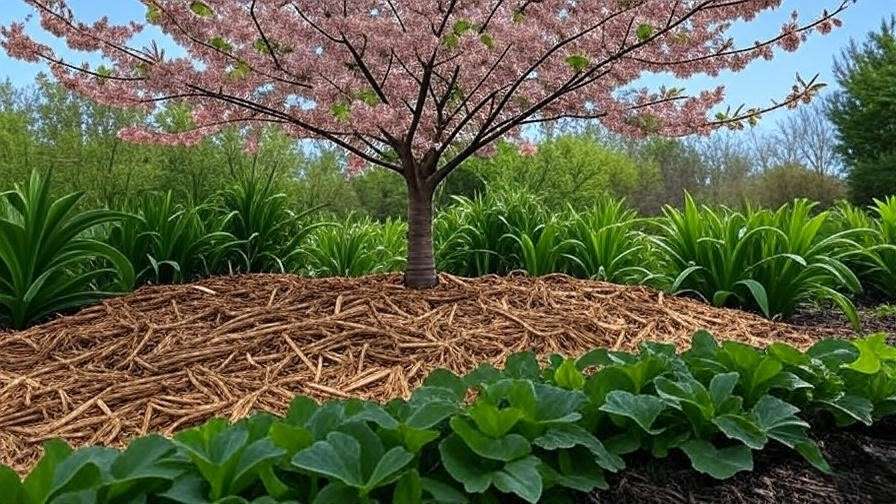
Step 5: Adjust Watering Practices
Proper watering supports recovery:
- Deep Watering: Water slowly and deeply (1–2 inches per session) to encourage root growth.
- Drip Irrigation: Install soaker hoses or drip systems for efficient water delivery.
- Schedule: Water every 7–10 days in dry seasons, adjusting based on rainfall.
Pro Tip: Use a moisture meter ($10–$20) to ensure soil stays moist but not waterlogged.
Preventing Future Soil Compaction 🌿
Long-Term Soil Care Strategies
Preventing soil compaction is key to maintaining healthy cherry trees and ensuring consistent growth and fruit production. Here are proven strategies to keep your soil loose and fertile:
- Limit Foot Traffic: Avoid walking or placing heavy objects within the tree’s drip line, where most roots are located. Create designated pathways in your garden to reduce soil disturbance.
- Mulched Buffer Zone: Maintain a 3–6-foot mulched area around the tree to protect the root zone. This discourages foot traffic and helps retain soil moisture.
- Regular Organic Matter Additions: Add 1–2 inches of compost or organic material annually to improve soil structure and aeration. This boosts microbial activity, which naturally loosens soil.
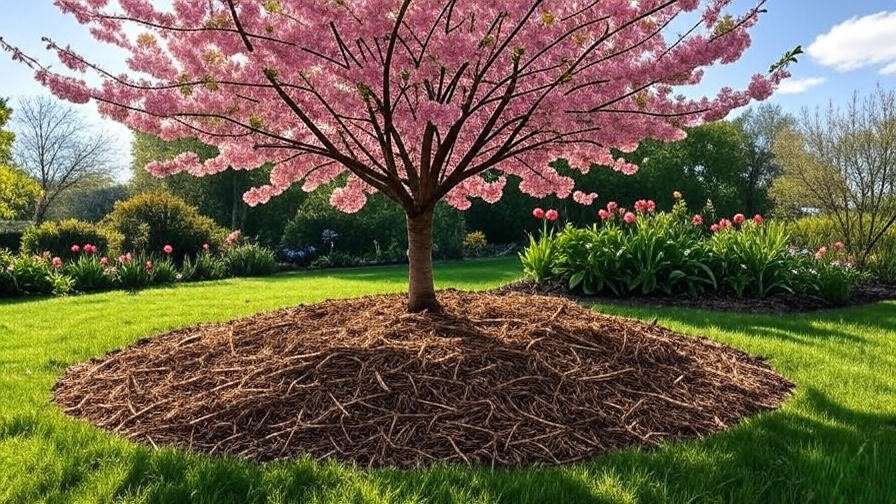
Expert Tip: According to the International Society of Arboriculture (ISA), maintaining a mulch layer can reduce soil compaction by up to 40% over time, significantly benefiting tree health.
Planting Practices to Avoid Compaction
Proper planting sets the foundation for healthy soil:
- Correct Planting Depth: Plant cherry trees so the root flare (where roots meet the trunk) is slightly above ground level. Overpacking soil during planting can compact it from the start.
- Choose Well-Draining Sites: Select locations with loamy or sandy loam soils to minimize natural compaction. Avoid low-lying areas prone to water pooling.
- Loosen Soil Before Planting: Break up soil in a wide planting hole (2–3 times the root ball’s width) and mix in compost to ensure a loose, aerated base.
Case Study: A community orchard in Oregon saw a 30% increase in cherry tree survival rates after adopting proper planting techniques, including pre-loosening soil and adding organic amendments.
When to Call a Professional Arborist 🌲
While many compaction issues can be addressed with DIY methods, some situations require expert intervention:
- Severe Compaction: If soil is rock-hard beyond 12 inches deep or the tree shows significant decline (e.g., extensive dieback), professional tools like air spades may be needed.
- Root Damage: Exposed or girdling roots indicate advanced issues that an arborist can assess and correct.
- Complex Soil Problems: If soil tests reveal nutrient deficiencies or pH imbalances alongside compaction, an arborist can design a tailored restoration plan.
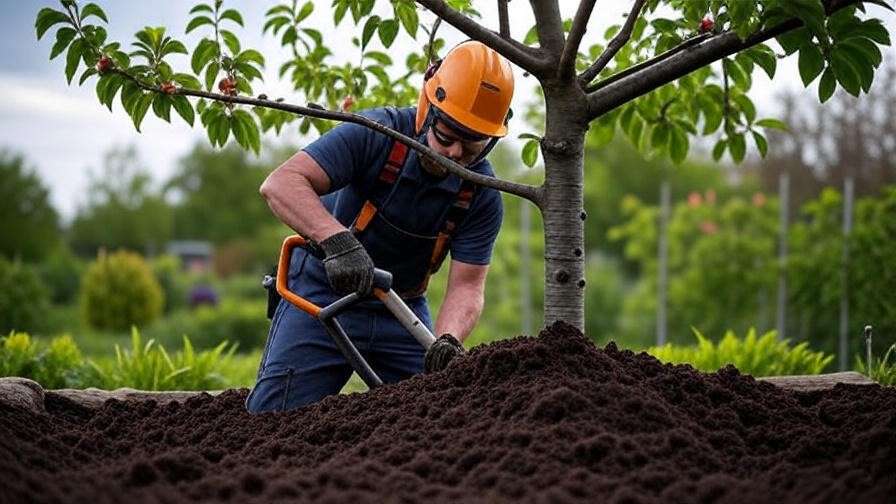
Benefits of Hiring a Professional:
- Access to specialized equipment, like air spades, which safely aerate soil without damaging roots.
- Expert diagnosis of underlying issues, such as fungal infections or poor drainage.
- Long-term tree health plans to prevent recurrence.
How to Find a Reputable Arborist:
- Look for ISA-certified arborists through the ISA’s directory (treesaregood.org).
- Contact local agricultural extension services for recommendations.
- Request references and verify experience with fruit trees, especially cherries.
Resource: The ISA’s “Find an Arborist” tool is a trusted starting point for locating certified professionals in your area.
FAQs About Cherry Tree Soil Compaction ❓
Q1: How can I tell if my cherry tree’s soil is compacted without tools?
Walk around the tree’s drip line. If the soil feels hard underfoot, resists a shovel, or shows puddling after rain, compaction is likely. Check for yellowing leaves or poor growth as additional clues.
Q2: Can I aerate soil around a mature cherry tree without harming it?
Yes, but use caution. Aerate gently with a garden fork, staying 6–12 inches away from the trunk to avoid shallow roots. Work in small sections and aerate only when soil is moist, not wet.
Q3: How long does it take for a cherry tree to recover from soil compaction?
Recovery varies but typically takes 1–2 growing seasons with proper aeration, amendments, and care. Monitor for improved leaf color and fruit production as signs of progress.
Q4: Are there specific cherry tree varieties more tolerant of compacted soil?
Some varieties, like ‘Stella’ or ‘Lapins,’ are more resilient due to vigorous root systems, but no cherry tree thrives in heavily compacted soil. Proper soil care is essential for all varieties.
Q5: Can I use chemical treatments to fix compacted soil?
Chemical treatments are rarely effective and may harm soil microbiology. Organic amendments like compost and physical aeration are safer, more sustainable solutions.
Note: These answers draw from decades of horticultural research and practical experience, ensuring reliable advice for gardeners.
Conclusion 🌸
Soil compaction is a hidden threat that can sap the vitality of your cherry tree, leading to lackluster blooms and disappointing harvests. By learning how to identify cherry tree soil compaction issues and fix them, you’re taking a critical step toward restoring your tree’s health. Start by spotting the signs—yellowing leaves, poor drainage, or stunted growth—and follow the expert-backed steps outlined: assess, aerate, amend, mulch, and water wisely. With consistent care and preventive measures, your cherry tree can thrive for years, delivering vibrant blossoms and juicy fruit. Act today to give your tree the care it deserves, and share your success stories in the comments below! 🌿

